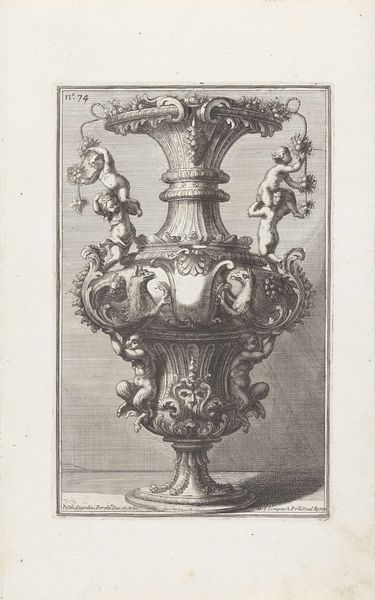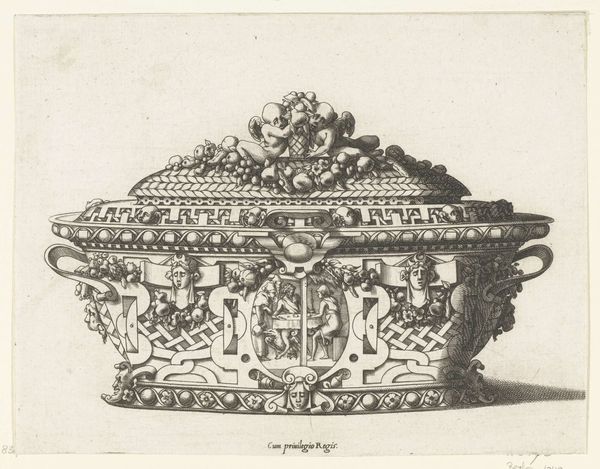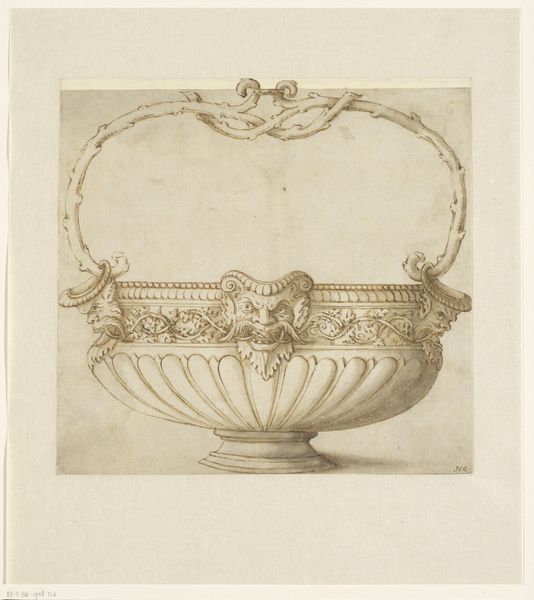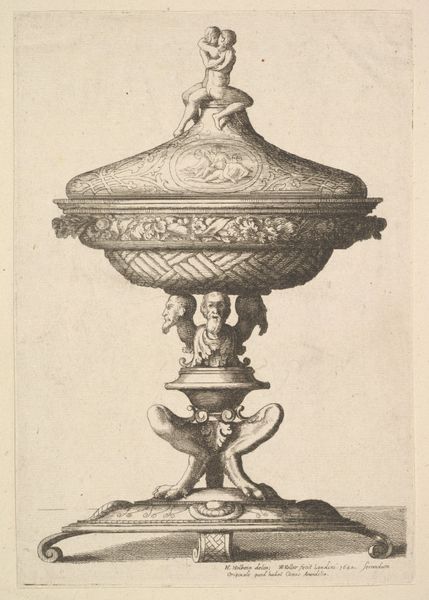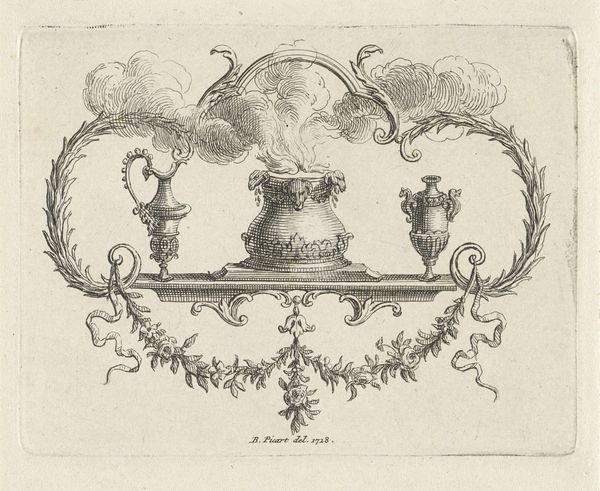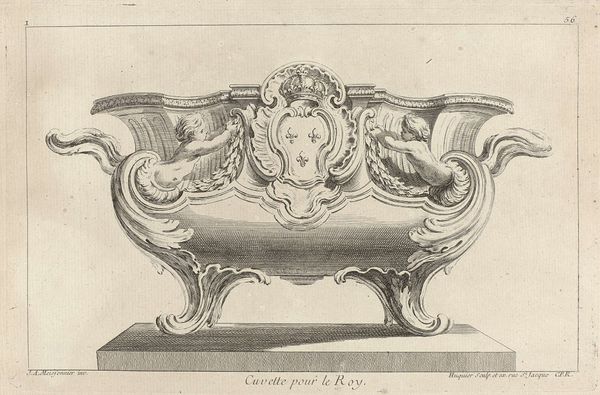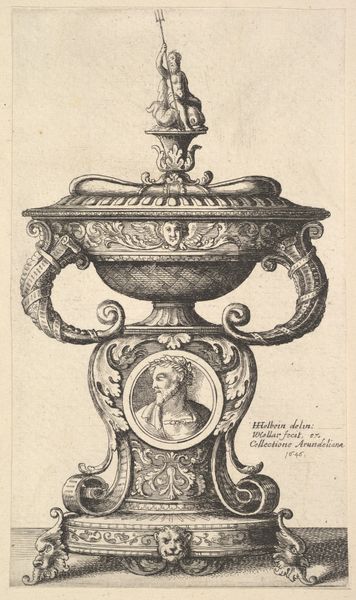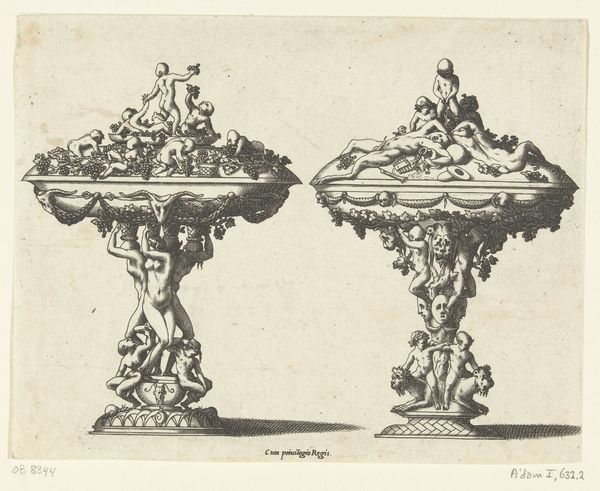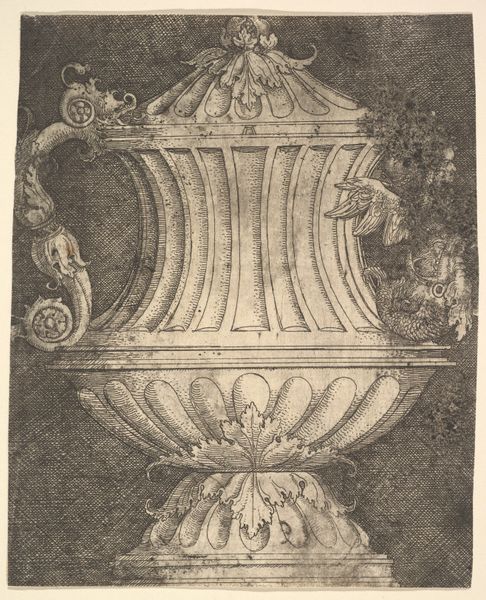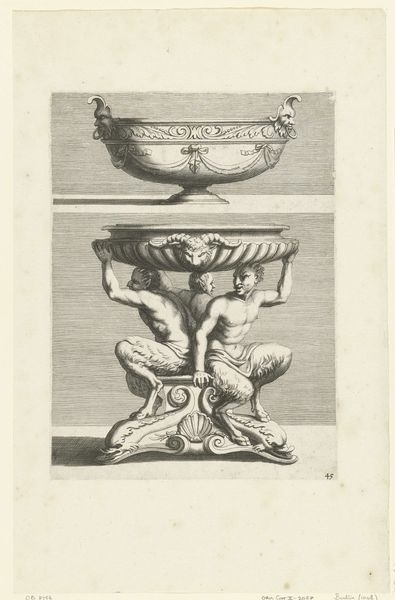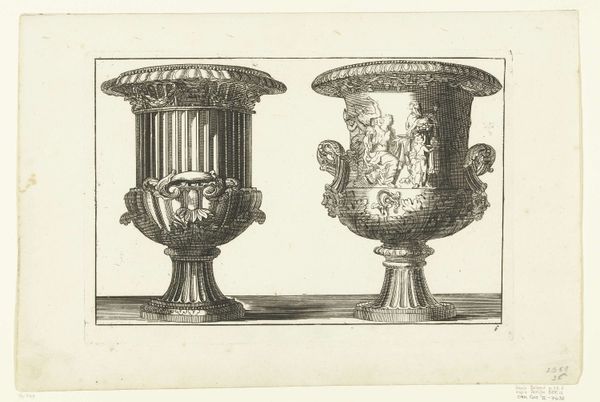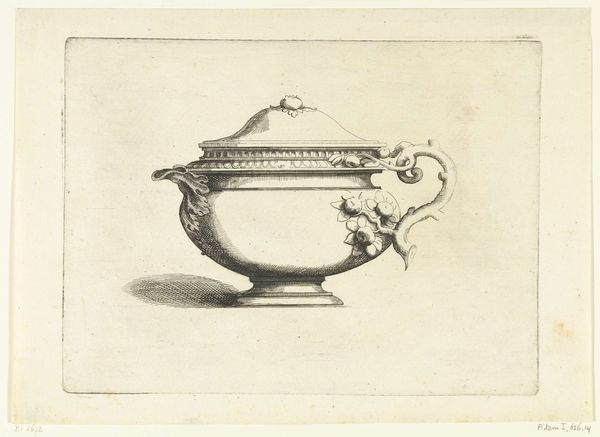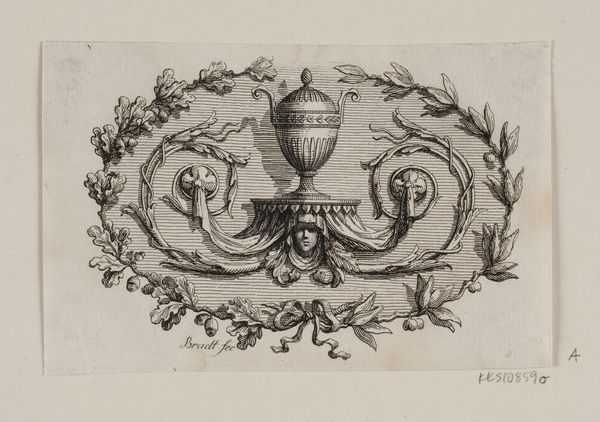
#
aged paper
#
toned paper
#
pen sketch
#
pencil sketch
#
old engraving style
#
personal sketchbook
#
pen-ink sketch
#
pen work
#
sketchbook drawing
#
sketchbook art
Dimensions: height 137 mm, width 202 mm
Copyright: Rijks Museum: Open Domain
Curator: What an intriguing piece! This is "Philia," dating back to 1563. It's currently held at the Rijksmuseum and created by Johannes or Lucas van Doetechum. We see it rendered in a delicate pen and ink. Editor: My initial thought? Weight. It feels incredibly dense despite the line work. The visual layering is almost dizzying, like looking into a meticulously crafted well. Curator: The weight is partly intentional, I think. “Philia,” meaning brotherly love, wasn’t just a nice sentiment. The depiction on this vessel shows that friendship required stability and permanence in those times, quite like a sturdy ceremonial bowl made for continuous sharing at gatherings. Editor: So the bowl becomes a metaphor? The etching within certainly suggests a narrative, some sort of marine procession. But it’s how the piece is structured—that dense, dark base supporting such an ornate upper section—it visually argues for that weightiness you mentioned. There is semiotic layering through this, in that its various forms create the same conclusion. Curator: Exactly! Remember, friendship during the Renaissance was a formal, even sacred bond. This vessel, though seemingly ornamental, might have been used in rituals or gatherings solidifying those relationships. Look closer— the figures intertwined with the bowl structure reflect mythological and heroic virtues considered central to civic responsibility and community welfare at the time. Each grotesque face, each drape, contributes. Editor: The craftsmanship is impressive; the details of those grotesque faces and figures are meticulously drawn with precise execution! The penwork creates a richness despite its seeming simplicity; though upon a second view there is some level of toning across the paper here too which provides it an older depth. This depth does enhance the effect that the item is far heavier in its symbolic worth. It is clearly meant to visually overwhelm, both technically and metaphorically. Curator: That’s astute. Now I see a bit better how these artistic choices underline its significance in Renaissance social customs. I learned from you too! Editor: It's the kind of object that begs for repeated viewings to really grasp all it holds and its place within the period and the world.
Comments
No comments
Be the first to comment and join the conversation on the ultimate creative platform.
